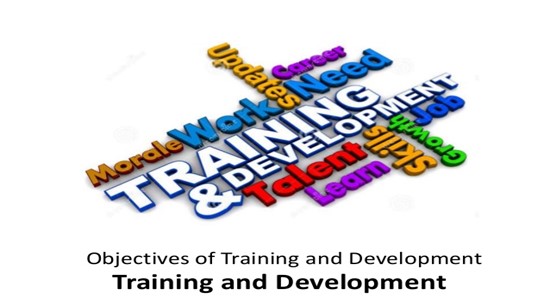
Humans are curious creatures. In fact, that might just be our more distinctive trait.
With a rapidly changing social, technological and business landscape, like the one we have had for the last several decades, and the idea that one’s learning should be confined to some particular time at school suddenly seems very bizarre and antiquated.
Lifelong education to the rescue then; which, in a corporate training context, translates to employee continuous training.
Just what are the advantages of employee continuous training for the modern enterprise and organization?
The Benefits Of Continuous Training
The benefits of employee training and development are widely known. But who said it should be limited to one particular sector, function or role? As the organization grows and the employees grow with it, the training needs change and the skills the employees should be competent with get constantly updated, as well. But what are the actual advantages of continuous training both for the business and the employees?
The market is not static
…and neither should your employees’ skills be.
Gone are the days when an office worker could look forward to a lifetime of professional relevance based on their school or university education, plus the occasional seminar.
Just consider this; a typical professional career spans about a 30-40 years range. But even going 20 years back, the world was a totally different landscape: Google (1998), YouTube (2005), social websites (mid-00s), mobile broadband (ditto), the modern smartphone (2007), all of those things that seem to have been with us forever, didn’t exist. 30 years ago.
With most industries (Finance, Payments, Banking, services, software, etc.) constantly changing, businesses should be prepared to adapt to these ever changing conditions or perish. You can’t serve a 2021 clientele with 2010 knowledge and approach.
The market is not static and neither should your employees’ skills be.
A comprehensive employee training and development plan that’s continuously developed, revised and adapted for new conditions, markets and challenges, is a essential for a competitive business and employee wellbeing and development.
Legislation and Regulation is not static either
Along with the market changes and technological progress, the rules change too.
And while some industries have it easy, others drown in a sea of ever newer and more complex regulations that they have to comply with, covering all aspects of business; from ethics to Fraud prevention, AML and the list goes on.
Sending employees off for some annual seminar, or organizing in-house classroom based courses won’t really cut it from a business disruption and cost aspect. Especially if your organization regularly recruits new people or promotes from within.
Here, a combination of an always-on online-training program, with the occasional required hybrid (blended) learning session can help ensure your staff are correctly trained in all the latest rules and regulations.
A continuous training program should, and will, ensure that your employees are always up to date with the latest technological developments — not just with the skills it takes to do their job well now, but also with the skills it will take to do their job well tomorrow.
Use it or lose it
This is another major reason why employee continuous training is so important: people forget.
Of course, some of the stuff in your employee training program they will use day in and day out during their normal work duties. Those they will remember.
But what about the other stuff, things that they need to only use occasionally, but whose irregular use can still make a big difference to your bottom line? Consider handling a particular, infrequent, but lucrative, client demand, a process that only happens intermittently, or requires an annual audit or review.
In order for us humans to maintain our knowledge and skills, we need to refresh our memories and practice regularly. See, most business skills are not like “riding a bike” — something dead simple that stays with you forever. Rather, they are like playing the piano, or like those French lessons your mom had you take: easily forgotten, difficulty recovered. “Use them or lose them”, as the saying goes.
Even as soon as a year in their job, most of your employees would have forgotten 50% (or more) of their employee induction program. Unless, of course, you have a system for employee continuous training in place, and have them go through the material at regular intervals.
It makes learning the norm rather than the exception
A one-off (literally, or annual etc.) set of employee training courses and seminars will always feel as some kind of a special situation — something your employees just have to suffer for a while, instead of part of the regular workflow.
Making training a part of a longer talent development process signals to employees that this is something normal, a part of everyday business life, as important as their regular work.
If you also get them to associate this long-running training regime with concrete career advancement opportunities, it will make them more incentivized and eager to participate in and pay attention to your learning and talent development program.
Attract better talent
The best employees are those willing to learn and grow.
By investing in a continuous employee education scheme, you don’t just train your own talent — you also attract new talent who values such progressive businesses that stay on the cutting edge. And if this is not one of the most important continuous training advantages, then what is?
… and enjoy better senior employee retention too.
Employees might leave a company for many reasons — with money only being one of them, not even the most important one, unless they are seriously underpaid.
Job satisfaction is a big factor in this.
A continuous training regime can help increase job satisfaction levels, by minimizing rot, giving your staff new skills and career advancements opportunities, and enabling them to be better at what they do.
Instead of forcing your employees to jump ship to keep their skills relevant, you give them new learning opportunities within the organization that they already work at — something that employees will always value.
Knowledge retention and employee engagement? Can the benefits of lifelong learning get any better than that?
Reaping the Benefits Of Continuous Training For Employees
Solon of Athens (638–558 BC), the ancient Greek statesman, lawmaker, and philosopher, once famously noted that “I always learn as I age”.
That’s something that we should all strive for. And the continuous training benefits are too many not to!
Continuous employee education, especially with the help of the subject matter experts delivered through The Payment Academy platform (launching soon), helps make this ongoing learning process formal, cost-effective, and beneficial — not just for your employee development, but for the overall success of your business. Watch this space to learn more about The Payment Academy, which is due for launch real soon.

To contact The Payments Academy please use the contact form, here.
Visit The Payments Academy website or join our LinkedIn Group.
